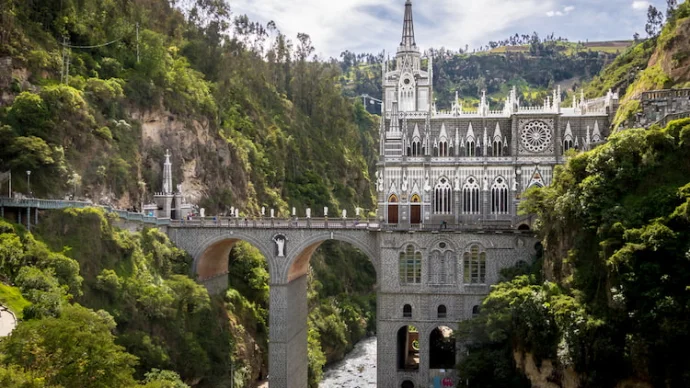
About Tiwanaku
Tiwanaku in Bolivia is an impressive archaeological site housing the capital of pre-Inca empire. Much about Tiwanaku remains a mystery and the subject of ongoing academic debate.
History of Tiwanaku
Tiwanaku started out as a small farming village in approximately 1200 BC, possibly the first to ever cultivate potatoes. Over the course of the first century, Tiwanaku developed and, by 550 BC, it was a thriving capital of a vast empire with a presence throughout much of the Americas.
At its peak, Tiwanaku had around 20,000 inhabitants. The city remained prosperous over the coming centuries and satellite towns were built, altogether with a population of up to 175,000 people.
The people of Tiwanaku built a magnificent city spanning approximately 2.3 square kilometres with monuments, temples, homes and public buildings. Constructed using the adobe method, this feat was all the more impressive when one considers that Tiwanaku is located approximately 3.5 kilometres above sea level, requiring many of their materials to be transported over long distances.
Tiwanaku was still flourishing in 900 AD, however by the time it was discovered by the Incas in the mid-fifteenth century, it was entirely abandoned, probably having declined in the twelfth century because of a major drought. 16th century Spanish conquistadors wrote about the city, but it had long been abandoned by this point. Regardless, the legacy of the Tiwanaku Empire remains today, albeit in ruins.
That which remains is incredible and has resulted in much excited speculation over the years. For example, the many carved heads on the “Templete” or Small Semi-Subterranean Temple were probably meant to represent humans, but have been said to resemble aliens. This has led to some ‘alternative’ theories as to who – or what – built Tiwanaku.
One of Tiwanaku’s most famous structures is its Akapana temples, which would once have been a pyramid, but has since been significantly eroded, both by looters and by nature. However, its 16 square metre base does allude to the former grandeur of this structure.
Today, Tiwanaku is a popular tourist site and a UNESCO World Heritage site. Visitor can view its many monuments, gates – such as the well-known Gateway of the Sun – and statues, all of which attest to the importance of this once ceremonial city.
Tiwanaku today
The site has remarkably well preserved carvings, and is often extremely quiet. There’s limited signage (even in Spanish), so it’s best to read up before you go: hiring a guide can be extremely useful if you want a fuller picture of what life might have been like at Tiwanaku.
Remember the altitude: take it easy as you might find yourself breathless, particularly if you choose to do any hiking or climb the pyramid.
There are two museums on site which are well worth taking in, although most of the signage is in Spanish. The town of Tiwanaku has amenities, including restaurants, accommodation and a 16th century church believed to have been built with stones from the site itself.
Getting to Tiwanaku
Tiwanaku is about 2 hours east of La Paz and makes a great day trip, particularly for any ruin aficionados. Minibuses run from the Cementerio General in La Paz to Tiwanaku: check whether or not they go to the ruins or the town, as they’re about a mile apart. If you plan on walking between the two, bring water, a hat and good shoes as the Bolivian sun is very strong!
It’s also worth checking with your driver what times the bus makes the return journey as you don’t want to end up stuck there.
Featured In

Historic Attractions in South America
From the world-renowned Machu Picchu to the large pre-Inca civilisation of Chan Chan, there's a site to suit every history lover's taste in South America.

Bolivia Historic Sites
Discover the best historic sites in Bolivia, from the impressive ruins of Tiwanaku to the mountaintop fortress of El Fuerte de Samaipata.




















